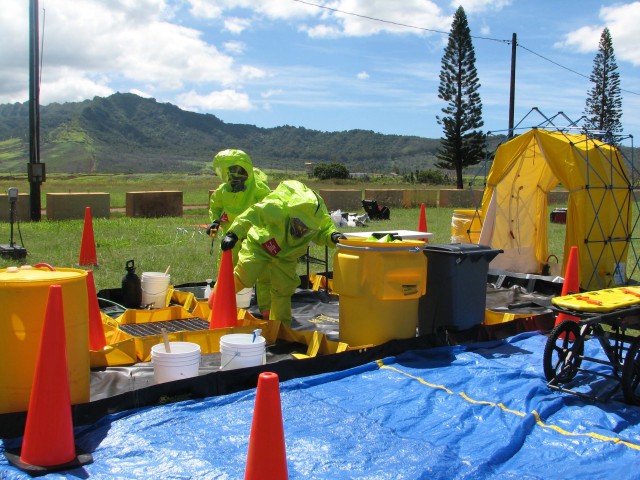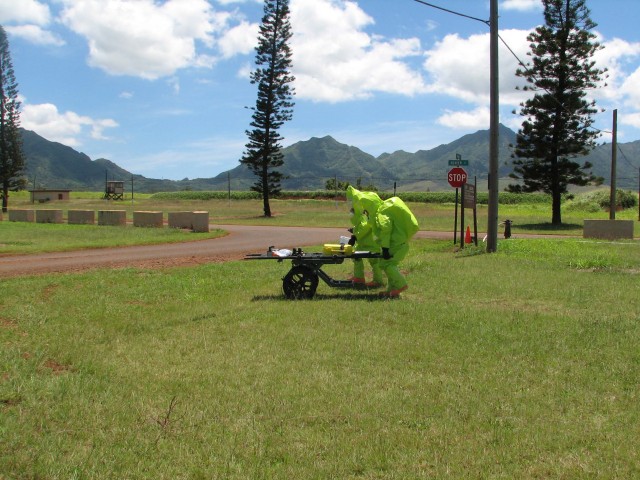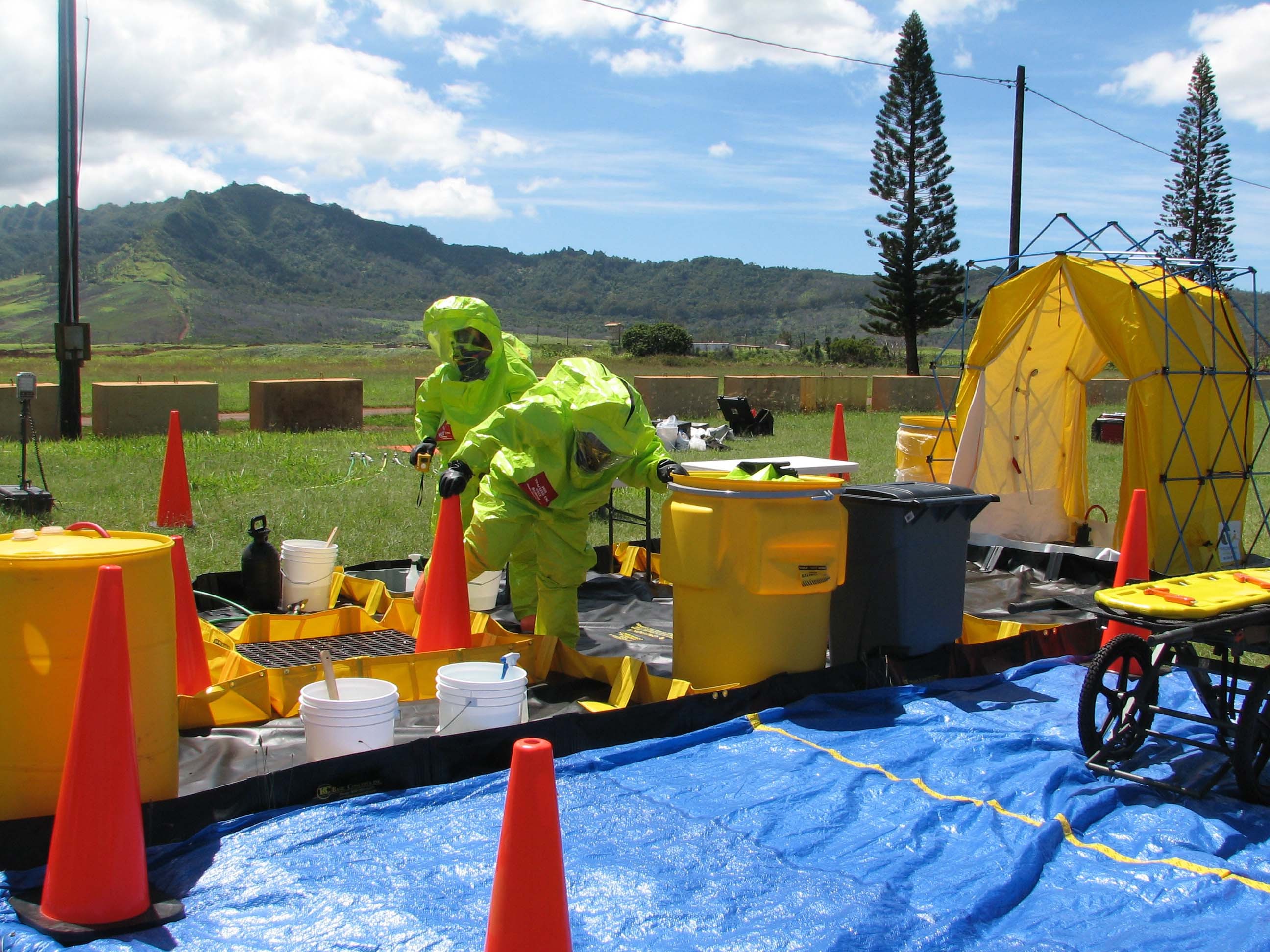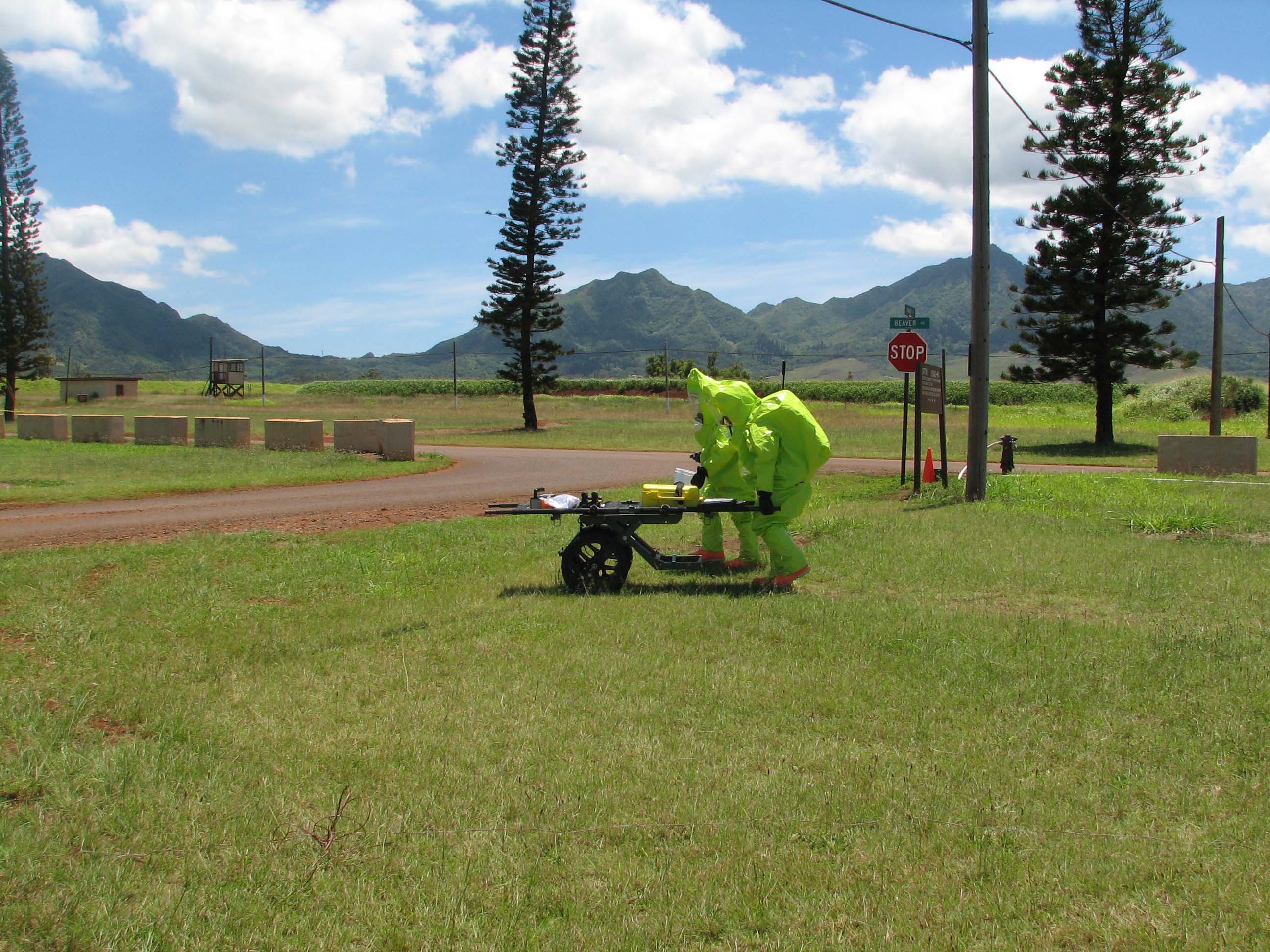Under the relentless Hawaiian sun, Chemical, Biological, Radiological and Nuclear (CBRN) Soldiers of 3rd Platoon, 71st Chemical Company donned cumbersome personal protective equipment and set forth on a historical journey.
With the support of the entire company, 12 members of the 71st completed training and certification this week to become the first ever Active Response CBRN or "ARC" Team in the Pacific.
The mission of the ARC Team is to respond as required during combat operations, a natural disaster, or in response to an accident or terrorist attack which results in the release of a CBRN or toxic industrial chemical or material.
Similar teams have been established in other operational theaters on an ad hoc basis to meet requirements for a technical CBRN response capability. However, United States Army, Pacific set forth a deliberate process nearly two years ago to formalize the manning, equipping, training, and certification of these teams.
"We have spent the past two years working diligently to create teams that could fill a capability shortfall identified by (U.S. Pacific Command) and USARPAC," said Master Sgt. Mark Nicholson, USARPAC CBRNE Operations NCO. "We finally have an active duty team that can deploy anywhere in the Pacific to deal with CBRN or WMD incidents."
The Soldiers assigned to duties as part of the ARC team were selected by the unit leadership due to their demonstrated abilities as CBRN Specialists. Each Soldier then completed the challenging eight week long Civil Support Skills Course (CSSC) at Fort Leonard Wood, Mo.
The CSSC begins with classroom study and testing during which students learned the fundamental science behind CBRN materials and toxic industrial chemicals. Then Soldiers learned the proper operational procedures for CBRN survey and sampling, evidence handling, identification of unknown materials and decontamination. Soldiers graduated from the CSSC as nationally certified Hazardous Material Technicians.
Second Lt. Pearle Surface, 3rd Platoon Leader and ARC Team leader and native of Torrance, Calif., said she was happy to have an opportunity to take part in this specialized training and added that this technical capability brings "...new respect to the Chemical Corps."
Once back at the unit, this team continued their collective and individual training and also engaged in numerous training events alongside their counterparts in the 93rd Weapons of Mass Destruction Civil Support Team (WMD CST) from the Hawaii National Guard.
One of USARPAC's goals is to have an active duty asset that is able to work seamlessly alongside the WMD CSTs in the theater as well as the Federal Fire Departments and local first responders who might support a domestic CBRN or hazardous materials response.
"We've become proficient in our CBRNE skills and missions," said Spc. Tracy Lawson of Miami. "Cross-training with the 93rd CST is also very beneficial to the success of the ARC Team."
Fellow ARC Team Soldier Spc. Randy Salazar from Victorville, Calif. added, "I like the new route we are taking. It makes me want to go to work everyday."
An identical team has also been established under the 95th Chemical Company in Alaska. The "Arctic ARC Team" is expected to complete its certification by the end of this fiscal year, greatly enhancing the ability of USARPAC to respond rapidly to a CBRN or WMD incident anywhere in the Pacific.




Social Sharing